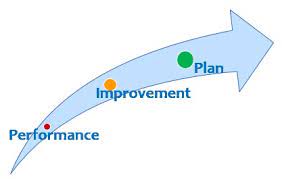Performance Improvement Plans (PIPs) are structured programs implemented by employers to help employees enhance their job performance. Also known as Performance Development Plans (PDPs) or Corrective Action Plans (CAPs), PIPs are designed to provide employees with clear guidance on areas where their performance falls short and to help them make the necessary improvements.
Table of Content
- PIP Full Form: Signs that Might Lead to a PIP
- PIP Full Form: Advantages of PIP
- PIP Full Form: Origins and Development of PIL
- PIP Full Form: PIP Functioning
- PIP Full Form: Developing an Effective PIP
- PIP Full Form: Manager’s Role in a PIP
- PIP Full Form: Case Studies: Real-life Examples of PIPs
- PIP Full Form: FAQ about PIP

Signs that Might Lead to a PIP
Signs that Might Lead to a Performance Improvement Plan (PIP)
- Consistently Missed Deadlines: Frequent failure to meet project deadlines or complete tasks on time could signal a need for a PIP.
- Decreased Productivity: A noticeable decline in the quantity or quality of work produced might prompt the need for performance improvement.
- Quality Concerns: Consistently delivering work that doesn’t meet quality standards can lead to the initiation of a PIP.
- Lack of Initiative: Employees who display a lack of initiative, innovation, or proactive behaviour might be candidates for a PIP.
Communication Issues: Poor communication skills, both verbal and written, can impact collaboration and might warrant a PIP.
- Conflict with Colleagues: Repeated conflicts, disagreements, or challenges in working effectively with colleagues may lead to a PIP.
- Customer Complaints: Frequent customer complaints or dissatisfaction could trigger the need for performance improvement.
Advantages of PIP
- Using a PIP saves time, energy, and resources. These aspects are the pillars of a company to reach the goals; through planning, these are saved from wastage
- It magnifies the objectives and breaks them into bits and pieces to make them understandable and accessible by employees
- It helps set discipline and accountability among employees, like setting deadlines, reports, and focused supervision
- It helps level up the value and achieve new heights in dividend and efficiency
- It increases productivity and offers a better customer experience
PIP Functioning
When the employer monitor and get to know the deficiency of employees, they send a sheet that includes
- Name & job of the employee
- Assigned supervisor
- Points where the employee is lacking
- Expectations from employee
- Suggestions and training
That’s how a performance improvement plan is structured for the employee.
Developing an Effective PIP
- Crafting an effective Performance Improvement Plan (PIP) is essential to help employees enhance their performance and contribute positively to the workplace. The process begins by identifying specific areas where improvement is needed. This might include pinpointing missed deadlines, quality issues, or other performance-related concerns.
- Once the areas for improvement are recognized, clear and measurable performance goals should be set. These goals act as a roadmap for the employee, indicating the expected outcomes within a specified timeframe. These objectives should be realistic, achievable, and aligned with the overall objectives of the organization.
- In the plan, it’s crucial to outline the support and resources the employee will receive during the improvement process. This might involve additional training, mentoring, or access to relevant tools and information. Clear communication about available support fosters a sense of partnership and helps the employees understand that the company is invested in their growth.
Manager's Role in a PIP
The Manager’s Role in a Performance Improvement Plan (PIP)
In a Performance Improvement Plan (PIP), the role of the manager is pivotal in guiding the employee toward enhanced performance and overall success. The manager’s involvement is crucial at every step of the process to ensure clarity, support, and constructive development. Here’s a breakdown of the manager’s role:
- Identification of Issues: The manager identifies performance issues that require improvement and gathers relevant data to support their observations. This could include missed goals, quality concerns, or communication problems.
- Developing the PIP: The manager designs a comprehensive PIP that outlines specific areas for improvement, measurable goals, and a well-defined timeline. The plan should be realistic and tailored to the employee’s needs.
- Setting Clear Expectations: The manager communicates the performance expectations and goals to the employee transparently. Clarity in expectations is essential to avoid misunderstandings and ensure everyone is on the same page.
- Providing Support: Managers offer necessary resources, training, and tools to assist the employee in achieving the outlined goals. They ensure the employee has access to everything needed for improvement.
- Regular Check-ins: Scheduled meetings allow the manager to provide ongoing feedback, track progress, and offer guidance. These check-ins keep the employee focused and motivated throughout the improvement process.
Case Studies: Real-life Examples of PIPs
- Sarah’s Communication Enhancement : Sarah, an experienced project manager, was struggling with communication breakdowns in her team. Her manager noticed misaligned expectations and frequent misunderstandings. To address this, a Performance Improvement Plan (PIP) was initiated. Sarah’s manager set specific goals, such as attending communication workshops and improving weekly progress reports. .
- John’s Timeliness Enhancement: John, a software developer, consistently missed project deadlines, impacting project schedules. A PIP was implemented to help him improve his time management. John’s manager collaborated with him to set achievable targets and milestones.
- Maria’s Quality Enhancement: Maria, a quality control analyst, faced challenges in maintaining consistent quality standards in her reports. A PIP was devised to address this. Maria’s manager provided her with detailed feedback, emphasizing the need for accuracy and attention to detail. The PIP included additional quality assurance training.
Conclusion
In the above article, we read the full form of PIP, a performance improvement plan. PIP or Performance action plans are formed to improve, upgrade, and modify when degrading performances are recorded. These all things are achieved by following five-stage plans for improvement, which include assessment of problems, peer discussion, objective forming, training, and execution.
FAQs About PIP
A PIP is initiated when an employee’s performance consistently falls short of expectations. It’s intended to provide guidance and support to help the employee make necessary improvements.
A PIP typically includes specific areas for improvement, measurable goals, a defined timeline, available support and resources, regular check-ins, and a plan for positive reinforcement.
The employee’s manager or supervisor usually develops the PIP based on their observations and performance data.
Performance issues can include missed deadlines, quality concerns, communication breakdowns, productivity decline, and more.
Related posts:
- AMC Full Form: Benefits, Components, Needs, Advantage
- ORS Full Form: Dehydration, Myths, Flavors, Varieties & Facts
- PCC Full Form: Importance, Types, Application Process
- PAN Full Form: Legal Provisions, Regulations,
- BRB Full Form: Productive, Routine, Distractions
- MCD Full From: Introduction, Responsibility, Challenges
- CT Scan Full Form: Scans, price, Advantages
- USA Full Form: History, Economics,Technology, culture




















